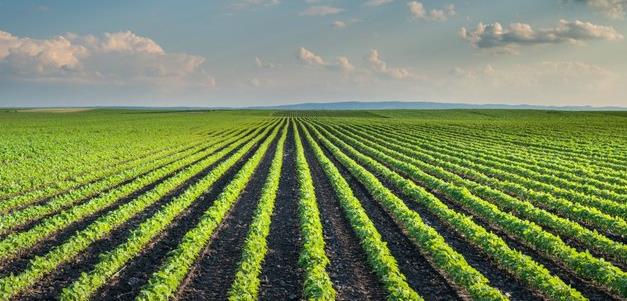Planting behind schedule in Northeast Arkansas; rest of the state a mixed bag
by April 2, 2018 3:53 pm 527 views

Corn and rice planting is underway in the Natural State but it’s a slow go in Northeast Arkansas. Rains and cold temperatures have stymied farmers’ efforts to get seeds into the ground, Craighead County extension agent Branon Thiesse told Talk Business & Politics. Less than 400 of the estimated 338,000 agriculture acres in the county have been planted, he said.
“We need to see some warm weather to warm the soil. … They (farmers) are getting concerned,” he said.
Corn and rice growers in other parts of the state have made some headway, according to the U.S. Department of Agriculture’s National Agricultural Statistics Service (NASS). As of March 25, more than 18% of estimated 2018 corn acreage had been planted, about double the five-year average for this point in the season, NASS reported. Rice growers seeded 4% of acreage, twice what was completed by this time last year, and four times higher than the five-year average. Arkansas growers will grow about 1.33 million rice acres and 650,000 corn acres, according to NASS.
A dry fall helped farmers in Craighead County better prepare fields for this growing season, Thiesse said. Corn is typically planted through the first week of May, and rice is planted through the end of May, he said. Farmers will start to plant soybeans in mid-April, and cotton and peanut planting will begin after that.
Timing is important in farming, he said. Crops planted earlier typically produce better yields, Thiesse said. Colder ground temperatures stunt plant growth, so rain isn’t the only issue, he added.
Robert Goodson, agriculture agent for the Phillips County Cooperative Extension Service office, said some farmers stayed out of the fields, suspecting excessive rains. Growers collectively planted more than 3,000 acres of corn and 1,000 acres of rice throughout the county. Most growers in his county finished their pre-emergence pesticide applications, using either aerial or ground rigs.
“There’s still some prep to do, but we’re in good shape. If we can have four or five days of dry weather and a little breeze, we’ll be back on schedule,” Goodson said.
Rains stalled field preparations in Cross County over the past several weeks, but may have occurred additional costs, Cross County extension agent Rick Wimberley said.
“We were seeing a lot of tractors go in the field last week, doing some tillage work,” Wimberley said. “But now, because of the rains, they’re going to have to go back in there and scratch the field up again. You’re adding $12 to $15 an acre to your production cost right there, in fuel and labor.”
Remaining ahead of the planting calendar, however, has kept growers in a reasonable mood, he said.
“With rice and beans, we’re nowhere near being behind the optimal planting date — we’re still in good shape there,” Wimberley said. “Nobody is really surly yet, but if this keeps up, they’re going to get that way.”
Progress in Perry County remained stalled as rains kept soil saturated, nearly to the point of flooding in some areas. Kevin Lawson, Perry County agricultural agent, said pasture managers were finally able to apply pre-emergent pesticides, but row crop farmers were in a holding pattern.
“But nobody’s gone to ‘plan B’ yet,” Lawson said, as far as planting intentions. “It’s too early for that in our neck of the woods. Everyone’s still on track.”
Weather forecasts in NEA will not help farmers in the coming days. There is a 70% chance of rain Tuesday (April 3). It’s expected to be sunny Wednesday (April 5), but the temperature is predicted to only rise to 54 degrees, according to the National Weather Service. There are rain chances for the region nearly every day through Sunday (April 8).
Losing another week would be bad, but it wouldn’t be catastrophic, Thiesse said, adding that if farmers aren’t putting plants in their fields by the middle of the month it would be a serious problem.
“We need to get to work,” he said.
